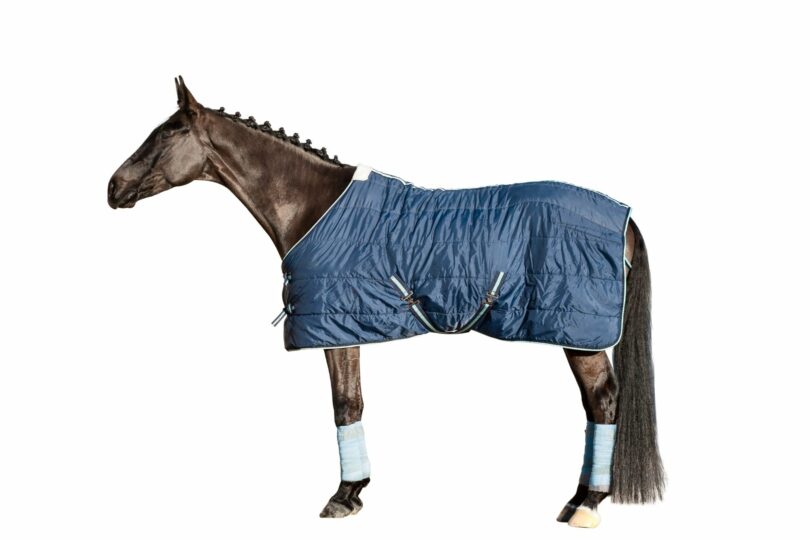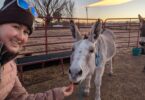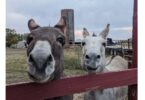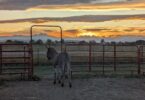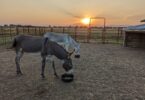How to Nail Your Next Blanket Shopping Trip
There are many different types of horse blankets on the market today. Some are designed for cold weather, some for rain, and others for protection against flies and bugs.
Not only are there different types of horse blankets for various activities and weather conditions, there also is different terminology around sizing, attachment points, and fit—it can be overwhelming! We’ll also provide tips on all things blankets and de-mystify this surprisingly complex topic.
Blankets 101
When to Blanket a Horse
The decision of when to blanket usually depends on the horse’s individual needs. Some horses naturally grow a thick coat to keep them warm in the winter, while others may need an extra layer of protection.
Horses that are clipped (have their hair trimmed short) will also need to be blanketed more often than those in excellent condition and have a full winter coat.
Sometimes owners will blanket a horse overnight on an especially chilly evening. Others may opt to use a sun sheet during the day when the sun is hottest, and the horse is most at risk for sunburn.
Why to Blanket a Horse
The most common reason to blanket a horse is for inclement weather. Cold, rain, and sun are all reasons that may warrant blanketing, especially with show horses.
If a horse spends a great deal of time outdoors in a cold climate, he may need a blanket. This is especially true if the horse doesn’t naturally grow a thick coat or relocates to a cold climate from a warmer one mid-season.
Sometimes a horse will be blanketed to keep him clean in preparation for a show. Other blankets help wick moisture away after exercise.
Blankets for the Season, Blankets for the Weather
In the winter, a horse may need an extra layer of warmth to prevent it from getting cold. This is especially true if the horse is younger, older, or doesn’t have ideal body conditioning.
Some horses burn easily and need protection from the sun. In the spring and summer, horses may need a fly sheet to protect their skin from biting insects. And in the fall, a horse might need a rain sheet to stay dry during wet weather.
Blanket Sizing Overview
Horse blankets come in various sizes ranging from small enough to fit a pony to large enough to accommodate a draft horse.
When choosing a horse blanket, selecting the proper size is essential. A too-large blanket can be cumbersome and dangerous, while a too-small blanket will be ineffective, or rub, creating discomfort for the horse.
To determine which size blanket will best fit your horse, measure laterally from the center of his chest to the base of his tail. The distance should be measured in inches, and it’s best to have a helper when trying to measure so you can get the most accurate size.
Blanket Types
When it comes to products made for covering your horse, there are several distinct types. Those with fill are typically meant to provide warmth and are called “blankets.”
“Sheets” can be made of lighter materials and have purposes other than warmth, such as protection from the sun and bugs, or to keep your show-horse clean after a bath or in transit.
You can find blankets and sheets with waterproof properties, although not all are made with this feature.
There also are blankets and sheets made for either indoor or outdoor conditions. Pay attention to the features unique to each to ensure you find the best blanket for your horse’s needs.
And as you can see in the next section, many sheets and blankets are made for specific situations.
Fly Sheet – A type of lightweight sheet often made of mesh that protects your horse from bugs. Some sheets also offer UV protection from the sun.
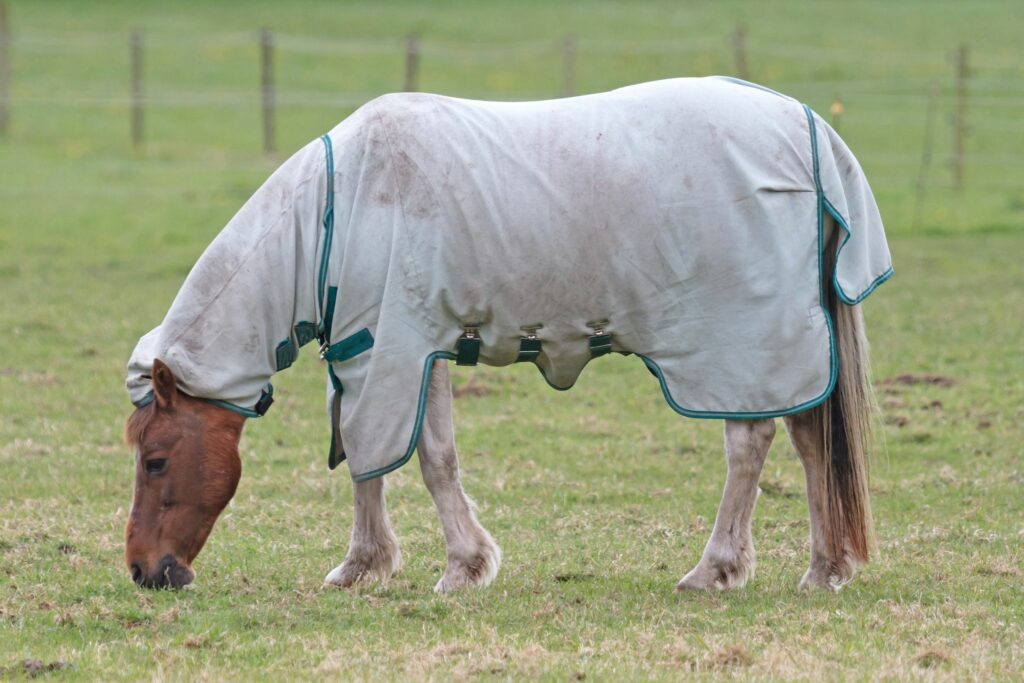
Photo Cred: Canva
Scrim Sheet – Scrim sheets are a bit dressier than a regular fly sheet. The scrim sheet is lightweight, protects from bugs, and is usually made of mesh. They are additionally helpful for keeping horses spotless at shows.
Cooler – As the name implies, coolers are useful when cooling your horse down after a workout. They are made of fleece which wicks moisture away from your horse’s body. The cooler also can be helpful when drying your horse off after bathing.
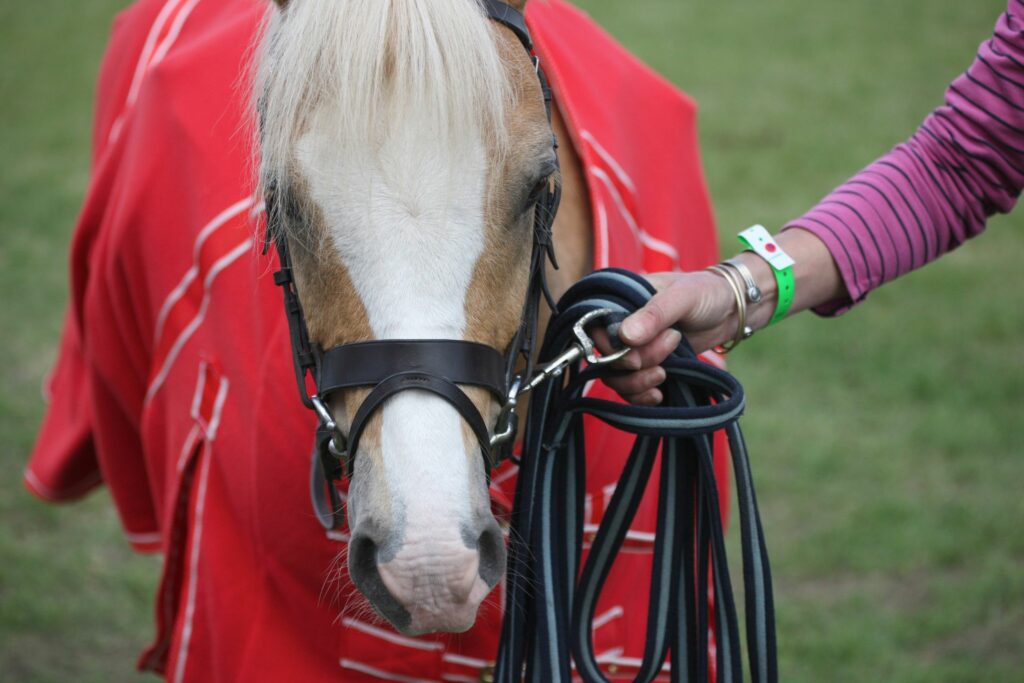
Photo Cred: Canva
Show Sheet – The show sheet is lightweight and generally made of cotton or nylon. It’s designed to keep your horse clean at a show.
Turnout Blanket – Turnout blankets help protect your horse from the elements when he is kept outside. Some turnout blankets are designed to keep the rain off your horse, while others can provide warmth in the dead of winter.
Turnout blankets should be designed with durability in mind, as horses can be quite rough on their gear!
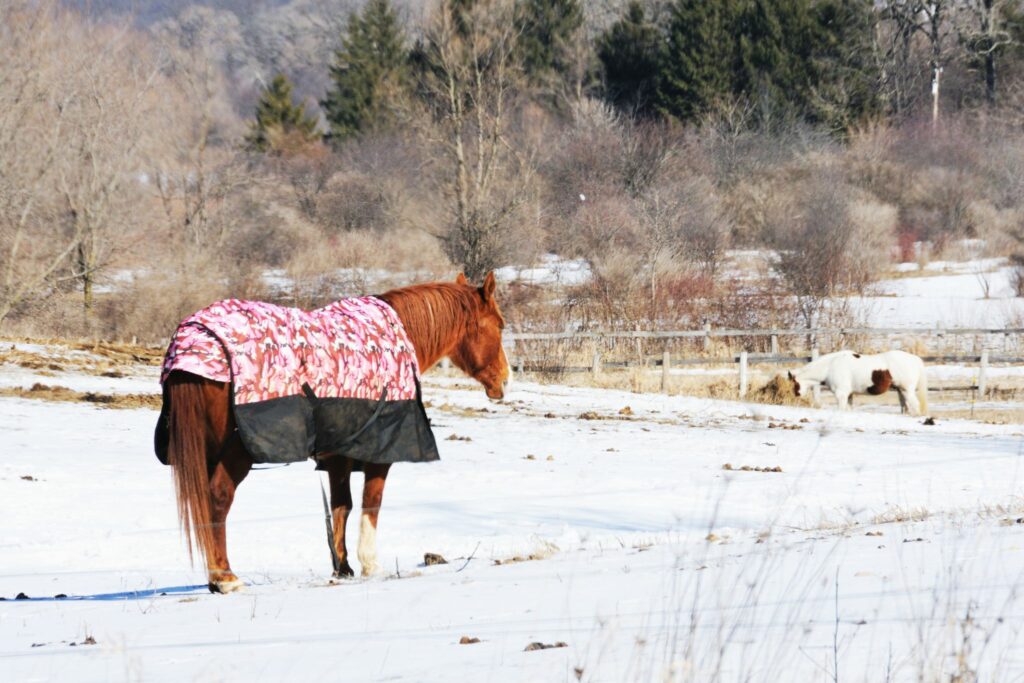
Photo Cred: Canva
Rain Sheet – This sheet type is waterproof and protects your horse from excessive moisture when outside.
Mid-Weight Blanket – Mid-weight blankets are useful when winter temperatures dip to between 20 and 40 degrees. They have more fill than lighter blankets, but not as much as heavy-duty blankets.
Heavy-Weight Blanket – Whether you live in Antarctica or Wisconsin, this blanket will keep your horse cozy in even the worst blizzard conditions. Heavy-weight blankets have the most fill of any blanket.
Quarter Blanket – As the name implies, this blanket covers only the horse’s hindquarters and is used while riding. It helps keep the horse dry during rainy rides or warm when the weather is chilly.
Hood – You can extend the protection offered by a blanket by purchasing a hood. Depending upon the material it’s made from, hoods shield a horse from sun, rain, bugs, and freezing temperatures.
Blanket Descriptions
Now that you understand the different types of horse blankets let’s explore some of their most common features.
Fill – The “fill” of a horse blanket is the material inside that provides insulation and, therefore, warmth. Most blankets feature polyester in varying amounts to provide protection in temperatures ranging from moderate to below zero.
Blankets of medium weight have around 150 to 225 grams of fill, while heavier ones can have between 250 and 400 grams.
Attachment Points – All horse blankets will have some way to attach them to the horse. The most common method is a buckle on the front of the blanket and surcingles around the belly.
Some also have leg straps to help keep the blanket from shifting.
If your horse is a wild child, you’ll definitely want to read blanket reviews and look for sturdy, reinforced attachment points.
This blanket has an open front closure style, with two buckles for improved fit.The belly closure is a single surcingle, and two leg straps designed to criss-cross.
Denier – The density of nylon fibers in a blanket determines its durability, and denier is a description of its strength. The higher the number, the more durable the blanket will be.
Quilted – A sewing technique known as quilting is used to sew the two outer and fill layers together. Without quilting, the fill layer can shift over time, reducing the overall warmth of the blanket.
Wither Relief – If your horse has high withers, a blanket can cause discomfort by rubbing. With extra padding in the withers, you can reduce potential rubbing to this area.
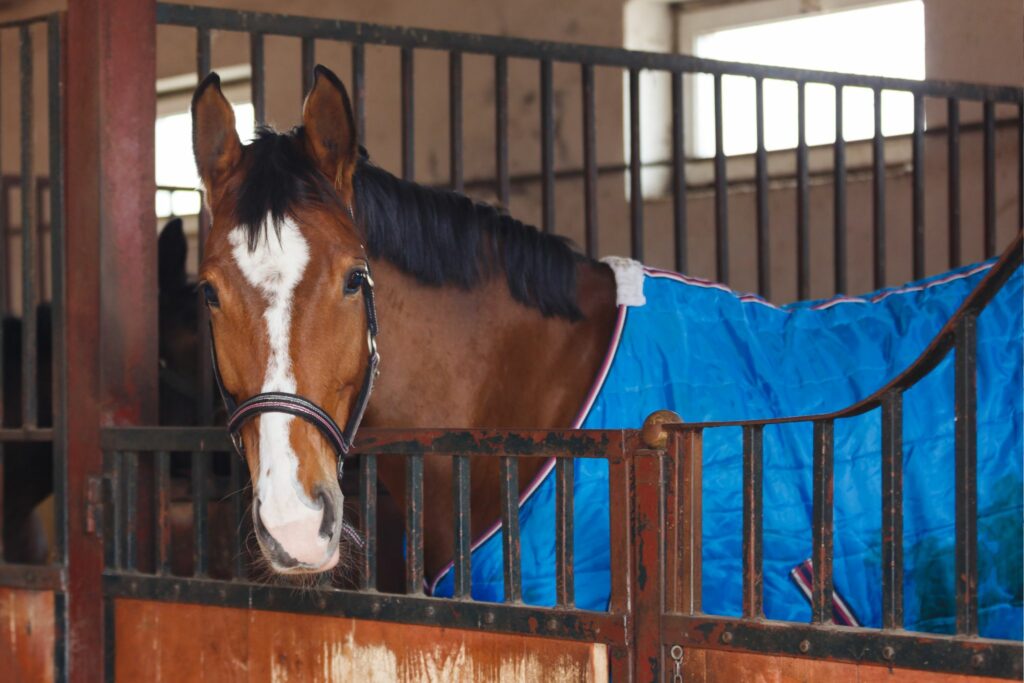
Photo Cred: Canva
Rug – A rug is another name for a blanket.
Liner – Although the exterior of the blanket layer for cold weather has to be tough, the layer that goes against your horse’s body shouldn’t be rough. You can find liners made from various materials, including cotton, nylon, and mesh.
Closed Front – Some blanket styles don’t have a buckle opening in the front. The blanket must be removed by pulling it over your horse’s head.
Open Front – Many blankets have buckles in the front to provide variability of fit and ease of use.
Blanket Fit
Aside from measuring for appropriate fit, it’s also important to watch how your horse moves in the blanket. Can he move easily?
Or does the blanket seem to cause pressure points? If the blanket does not have an ideal fit, it’s worth returning the blanket to find one that does.
Rub Guard – You can try a rub guard if your horse’s blanket tends to rub his shoulders or withers. A rub guard is a thin, stretchy fabric that covers the horse’s withers and shoulders, buckling behind his front legs.
The rub guard provides extra protection from chafing between your horse and his winter parka!
Sleazy – Made from the same material as a rub guard, the sleazy is also meant to provide a layer of protection from chafing. A sleazy covers your horse’s entire neck and attaches with a strap behind his front legs.
Sleazies are also helpful for keeping your horse clean after bathing and protecting braids and bands the night before a show.
Belly Band – Extra padding that goes underneath your horse’s belly to provide additional warmth. Belly bands can be helpful in securing the blanket, but if not designed and fitted correctly, they also can create an asymmetrical blanket weight, shifting the blanket to one side.
Surcingle – The straps on the front or belly of the blanket keep it in place. These should be tight enough to keep the blanket in place, but not too tight that the blanket causes uncomfortable bunching or rubbing.
Frequently Asked Questions
Q: Do blankets come with warranties?
Some blankets do come with warranties. Not all have a warranty, so if that’s an important feature, do your research before purchasing.
Q: How do you measure for a blanket?
It’s best to measure with a horse in a cross tie with a cloth tape and a helper. Hold the end of the measuring tape in the middle of your horse’s chest.
Run the tape around his shoulder, his body, and all the way to the area below his tail. Measured in inches, this number is your horse’s blanket size.
Q: How many blankets do you need?
It all depends upon your horse, the climate you live in, and whether or not you plan to show. If you live in a warm climate, your horse isn’t bothered by insects, and you never take him off the farm, you may not need any blankets.
But if you live in the Midwest, your horse is older, pastured outside, and loves rolling in mud after a bath, you may need 3-4 separate blankets.
Q: How do you wash a horse blanket?
Start by removing hair, dirt, mud, and other unmentionables from the blanket with a stiff brush. There’s no need to drag any extra muck into your laundry room if you don’t have to!
It’s best to use a front load machine when washing your blankets, especially if they are thick and heavy-duty blankets.
You may want to consider saving the wear and tear on your washing machine by taking your blankets to a laundromat; but beware, some laundromats do not allow horse blanket washing.
If the blanket has heavy straps, you’ll want to cover them to avoid tangles in the washing machine. Find a few old socks and wrap the straps with the socks. You may need to put a stitch or two in the stocking to hold it in place.
Use a gentle detergent or one that’s made explicitly for horse blankets. Using regular detergent can cause your horse to become itchy and uncomfortable, or can ruin the waterproofing of the blanket.
Consider using an extra rinse cycle if the blanket is really soiled. And always wash in cold water.
Once the blanket is done, hang it up outside to dry. If possible, try to pick a shady spot and ensure both sides of the blanket dry thoroughly.
If you tackled the wash in your home machine, consider running a clean cycle to ensure you get all residual hair, mud, and dirt out of your machine before running a load of clothes. This is a great time to do a deep clean on your machine!
Parting Thoughts
Blanketing your horse is a personal decision. With a little trial and error, you’ll find the perfect combination of blankets, sheets, coolers, fly protection, and whatever else you need to keep your horse happy all season long! You know your horse best, and you’ll quickly learn what he needs to be comfortable.
P.S. Enjoy this article? Trot on over to:
- Should You Ever Blanket a Wet Horse?
- How to Wash Horse Blankets the Easy Way
- Horse Blanket Basics: What’s the Average Size?
- Horse Care 101: Turnout Blankets vs. Stable Blankets
- 7 Best Blankets for Happy Horses (Winter, Turnout, Rain)
- Survive Horse Shedding Season (w/o Pulling YOUR Hair Out!)
- Chilled to the Bone: What’s Too Cold to Ride Horses?
- Winter Horse Care: A Helpful Beginner’s Guide
Sources
- Why Do Some Horses Wear Blankets? Even In The Summer? (horseracingsense.com)
- The Ultimate Horse Blanketing Guide – SmartPak Equine
- Horse Scrim Sheets and Anti-Sweat Sheets | Schneiders Saddlery (sstack.com)
- Fleece Coolers for Horses | Schneiders Saddlery (sstack.com)
- Turnout Blankets – Horse Turnout Blankets | EquestrianCollections
- Quarter Sheets | Dover Saddlery
- Horse Blanket Hoods – Horse Neck Covers | Schneiders Saddlery (sstack.com)
- Horse Blanketing 101 – Schneider’s Learning Center (sstack.com)

